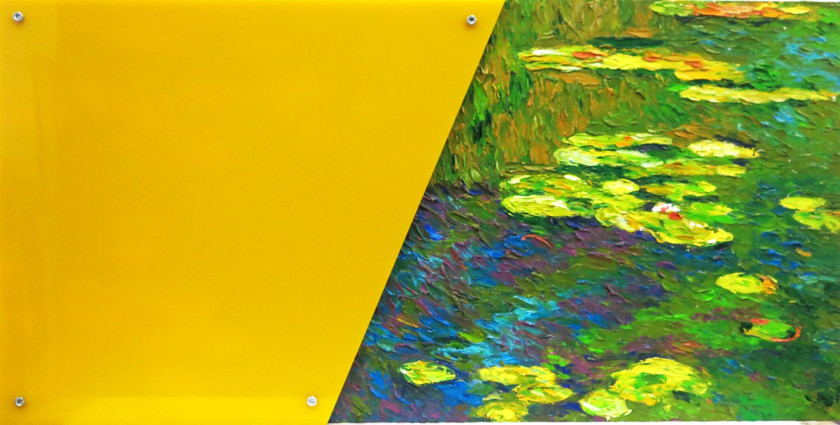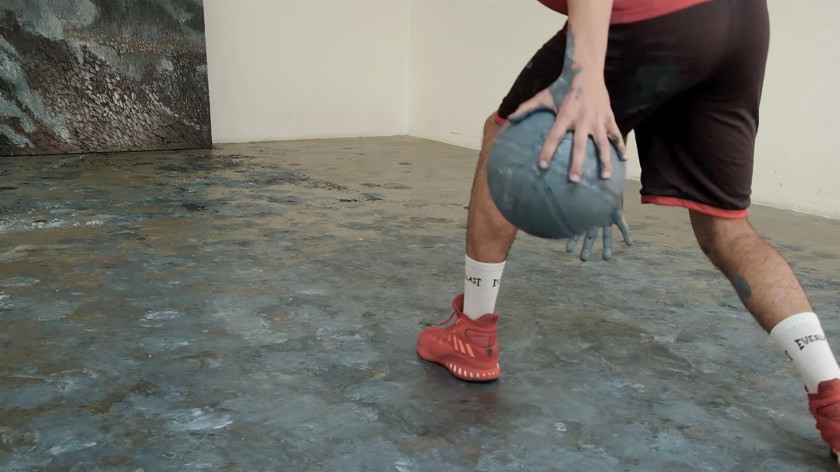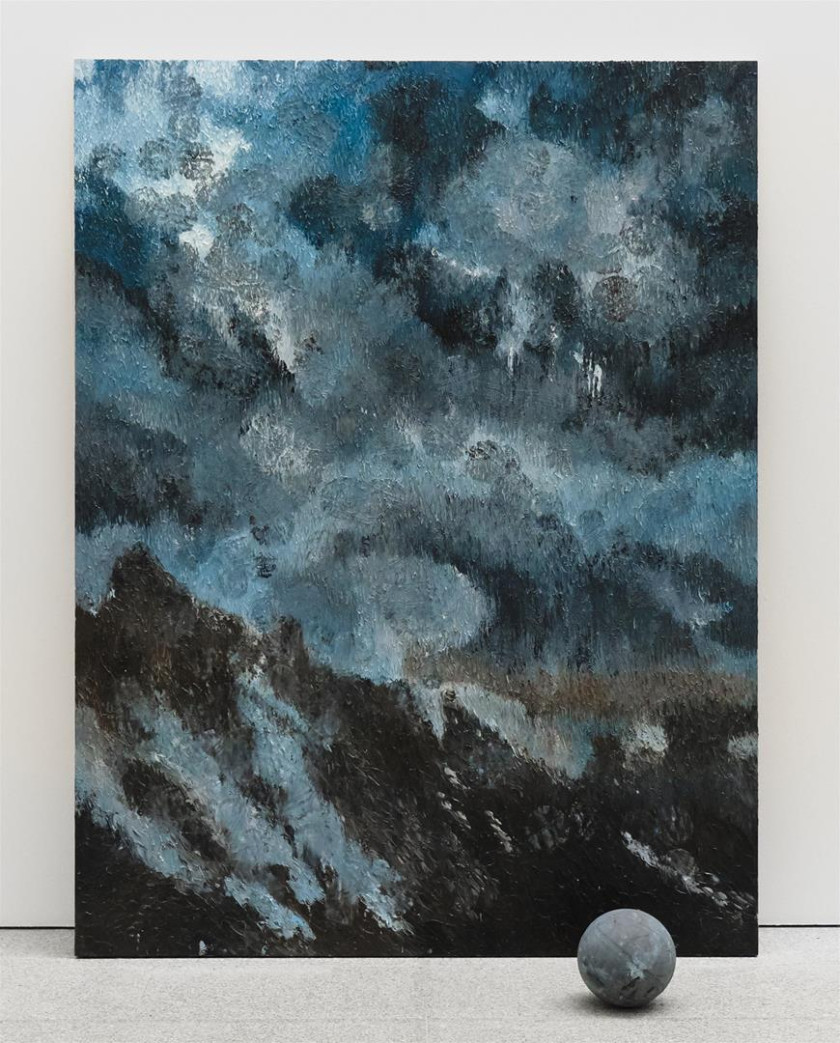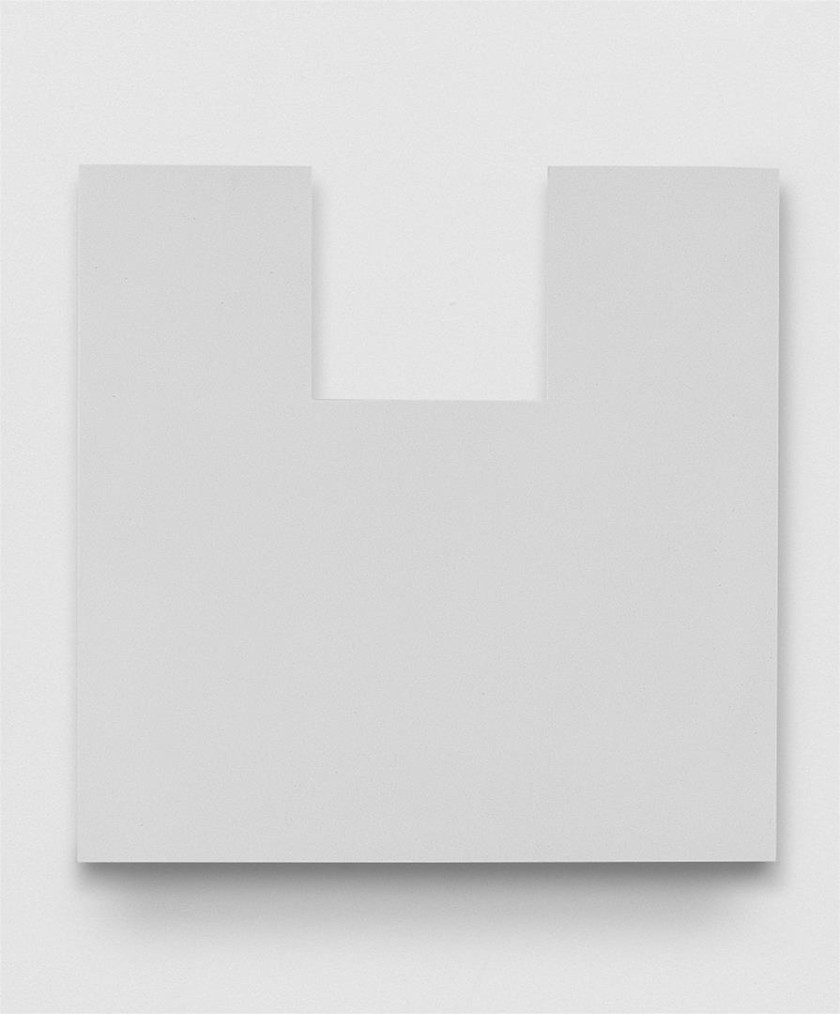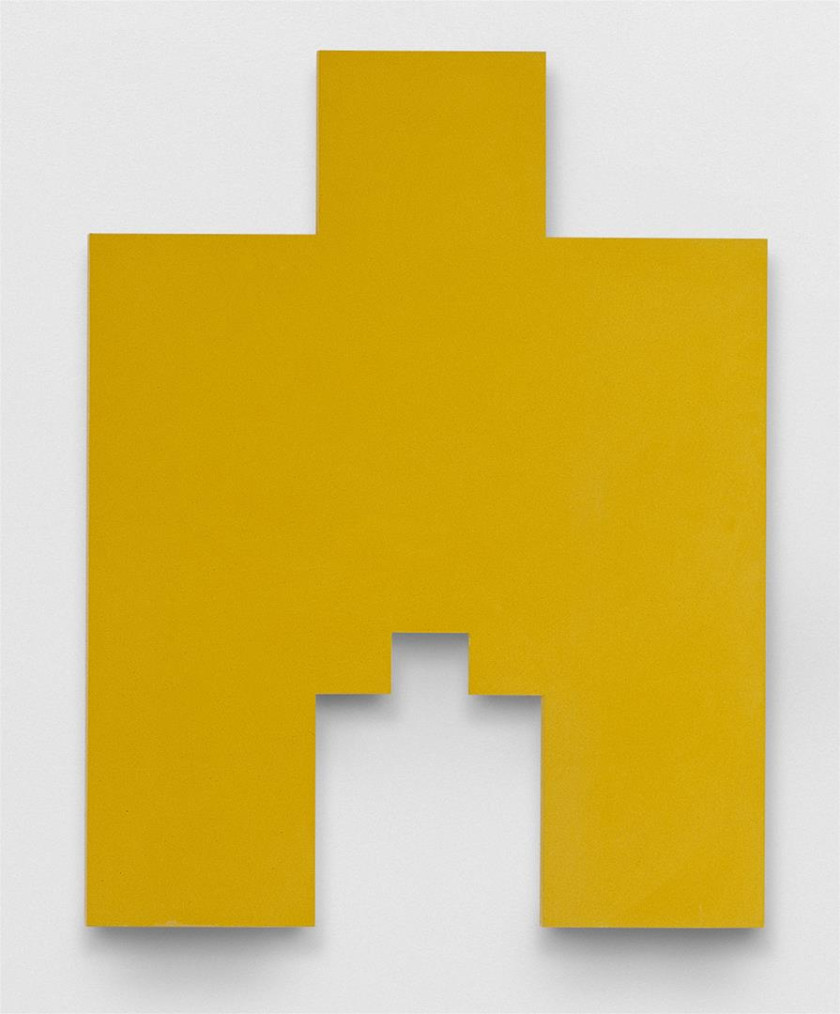Superfícies I (da série «Superfícies») [Surfaces I (from the series «Surfaces»)]
painting


1970/2000
Acrylic enamel on wood
130 x 90 cm
Víctor Pires Vieira is one of the Portuguese artists who has most profusely explored the limits and possibilities of painting. His use of simple geometric shapes, industrial materials and monochrome colorscolours reflects a concern with the objectification and autonomy of painting as a medium. Adopting a visual language rooted in American minimalism and inspired by Lucio Fontana's Italian spatialism, Pires Vieira integrates the idea of “‘interruption”, ,’ challenging the traditional two-dimensionality of the canvas and expanding the dialogue between painting and space.
In the works Superfícies I, II and III, from the series “Superfícies” (1970/2000), Pires Vieira uses a geometric shape that appears in his first work in 1969 and becomes recurrent in later works during the 1970s: a stylized stylised bottle with straight lines. This element, strongly influenced by Giorgio Morandi's still lifes and his concept of the timelessness of forms, is transformed into a pictorial icon. Each of these three works features a monochrome painting with intense colorscolours -– red, yellow, white -– with a glossy, industrial finish on a wooden support , which givesgiving the work an immaculate, almost sculptural quality. The shape of the bottle is cut out and worked on individually in different places on the support and in different orientations, making the surface of the painting more dynamic and creating a play between repetition and singularity.
This series reflects the artist's continuous questioning of the dematerialization dematerialisation of form and the exploration of the potential of painting, using rigid planes that are highlighted and related in non-hierarchical compositions. By proposing the metamorphosis of two-dimensional painting into an object that stands out from the wall and dialogues with space, Pires Vieira reaffirms painting as a “‘fact in itself.’”. Far from a return to original purity, the artist constantly explores new paths and problems, reaffirming his work as a space for experimentation and expanding the limits of pictorial creation.
Adelaide Ginga
